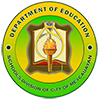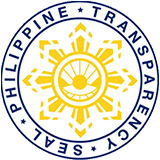Assessment is an essential component of education because it enables educators to identify student needs, evaluate progress, and make decisions based on data to enhance learning outcomes. Traditionally, teachers alone conducted assessments. However, a more recent strategy integrates feedback from a variety of sources, including peers, students, and the school community at large. This technique, known as 360-degree feedback, is acquiring popularity in education.
This article examines what 360-degree feedback is, its benefits, and how it can be implemented in education.
What is 360 Feedback?
360 feedback, also known as multi-source feedback, is an evaluation process that collects feedback from a range of sources, such as peers, superiors, subordinates, and other stakeholders, to provide a comprehensive and well-rounded view of an individual’s performance, highlighting their strengths, weaknesses, and areas for improvement. In education, 360 feedback can be used to assess the performance of teachers, administrators, and even students. By gathering feedback from diverse sources, such as students, parents, colleagues, and community members, educators can obtain a more holistic understanding of their impact on the learning environment and identify areas for improvement.
According to Riggio, R. E., & Carretta, T. R. (2016), 360 feedback is “a process for evaluating an individual’s performance and development needs by collecting performance data from a variety of sources, typically including the individual themselves, peers, subordinates, supervisors, and customers.”
Benefits of 360 Feedback in Education
360 feedback has several benefits for education:
1. Provides a comprehensive view of performance: Traditional assessment forms, such as teacher evaluations, may need to provide a complete picture of an individual’s performance. 360 feedback allows for a more comprehensive view of an individual’s strengths and weaknesses, providing a more accurate assessment.
2. Increases self-awareness: Receiving feedback from multiple sources can help individuals better understand their strengths and weaknesses, leading to increased self-awareness and personal growth.
3. Encourages collaboration: Gathering feedback from various stakeholders can foster collaboration and communication within the school community, leading to a more positive and supportive learning environment.
4. Improves decision-making: With a more comprehensive view of an individual’s performance, educators can make data-driven decisions to improve learning outcomes.
Implementing 360 Feedback in Education
Implementing 360 feedback in education requires careful planning and consideration. Here are some steps that schools can take to implement 360 feedback:
1. Define the purpose: Clearly define the purpose and goals of the 360 feedback process, and communicate them to all stakeholders.
2. Select the feedback sources: Identify the sources of feedback, such as students, parents, colleagues, and community members.
3. Create a feedback tool: Develop a feedback tool that is clear, concise, and relevant to the individual’s role and responsibilities.
4. Provide training: Provide training for all stakeholders on effectively giving and receiving feedback.
5. Analyze and act on feedback: Analyze the feedback, identify areas for improvement, and create an action plan to address them.
Conclusion
360 feedback is a valuable educational tool, providing a more comprehensive and well-rounded view of an individual’s performance. By gathering feedback from various sources, educators can better understand their impact on the learning environment and identify areas for improvement. While implementing 360 feedback in education requires careful planning and consideration, the benefits are well worth it. We encourage educators to consider incorporating 360 feedback into their assessment practices to improve learning outcomes and foster a positive and supportive learning environment.
References:
Riggio, R. E., & Carretta, T. R. (2016). 360-degree feedback in leadership development: A review and research agenda. Journal of Management Development, 35(8), 1021-1043. doi:10.1108/JMD-03-2016-0043
Jaarsveld, S. V., & Gavrielatos, A. (2018). The development of 360-degree feedback processes for use in teacher professional development. Professional Development in Education, 44(2), 214-229. doi:10.1080/19415257.2017.1331378
Kim, Y. J., & Kim, M. (2020). The effects of 360-degree feedback on teachers’ professional development: Focusing on teacher efficacy and teacher-student relationship. Education and Information Technologies, 25(3), 1719-1735. doi:10.1007/s10639-019-10072-0
Jewen L. Alimen


